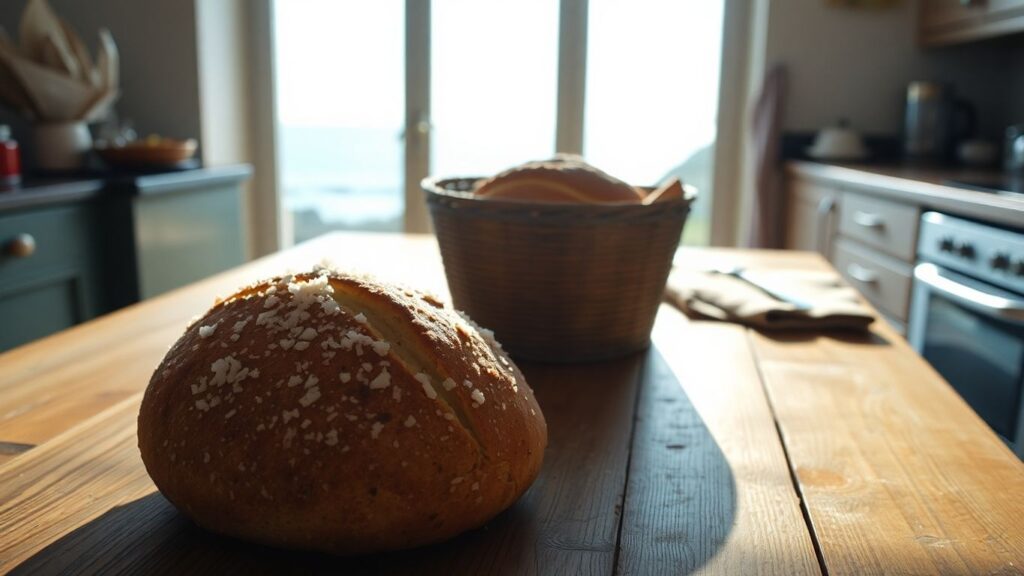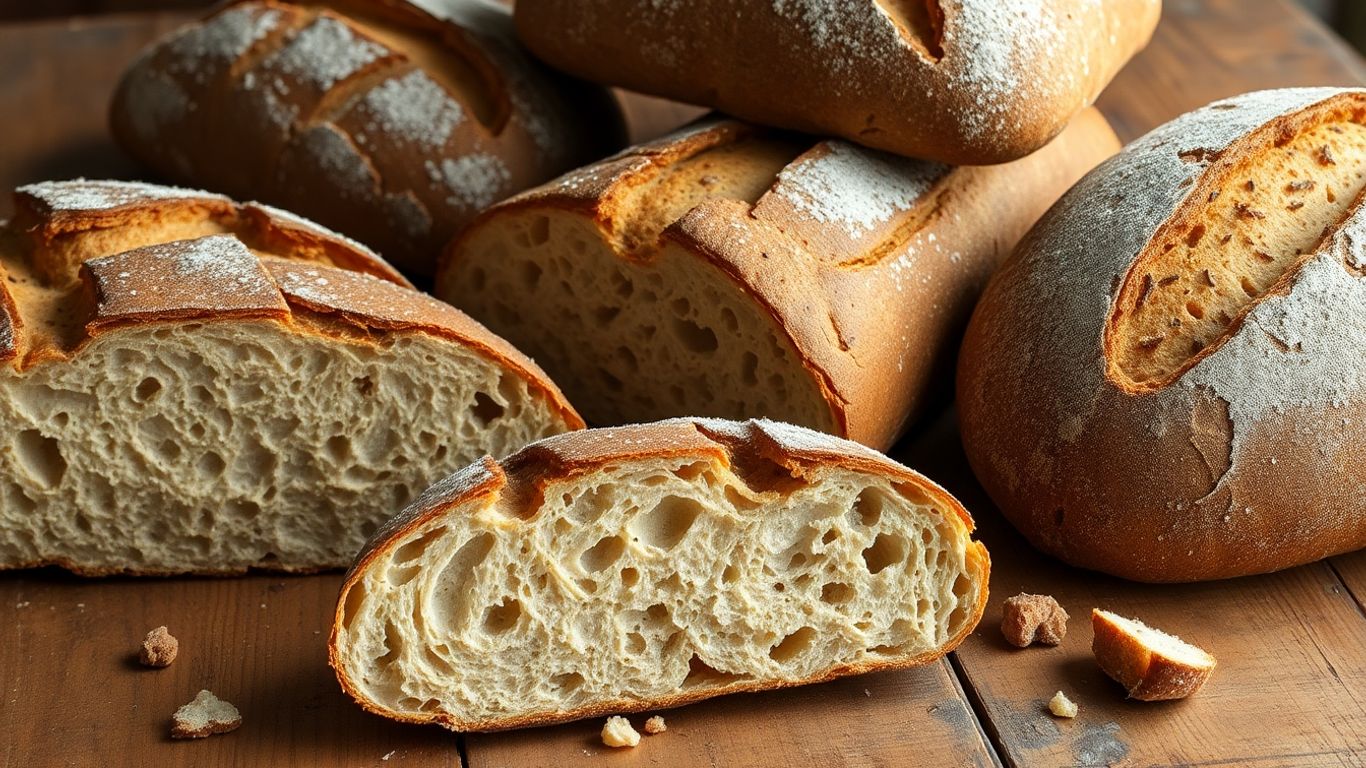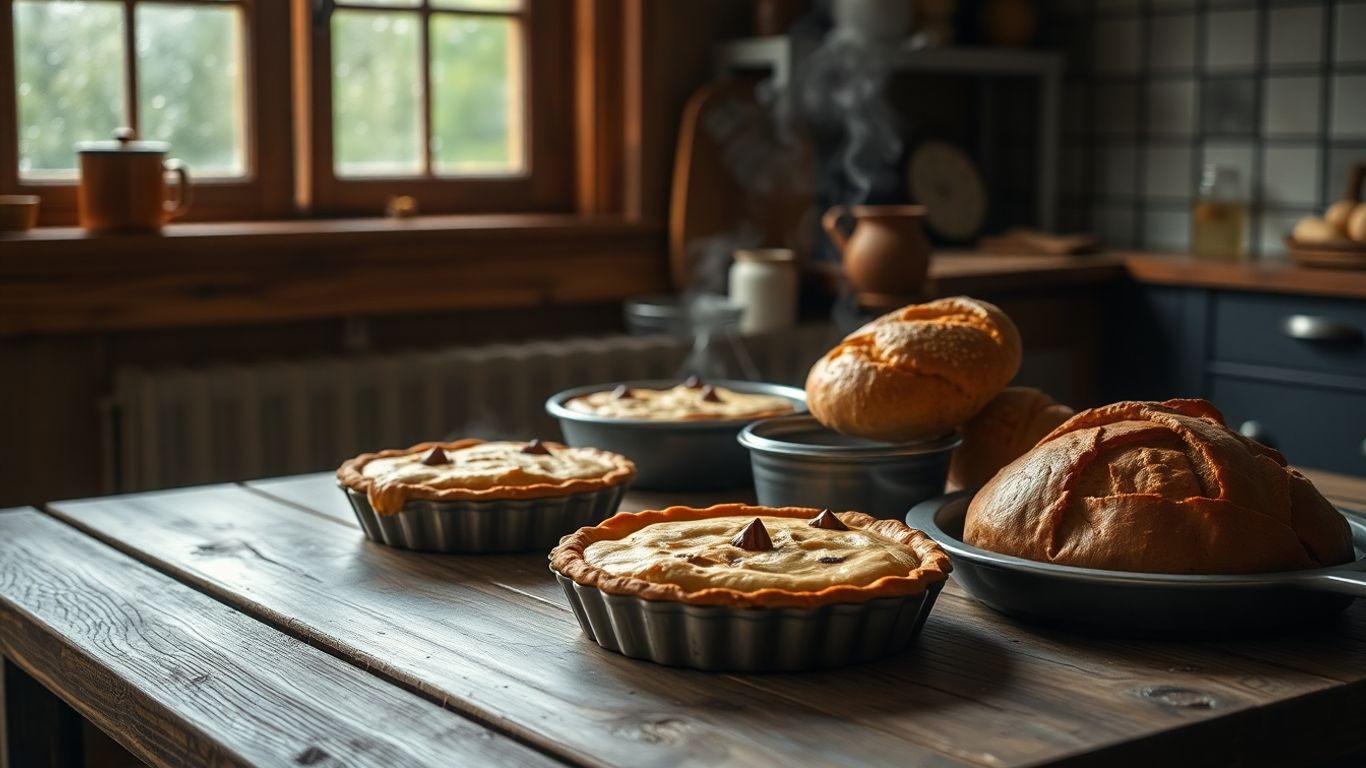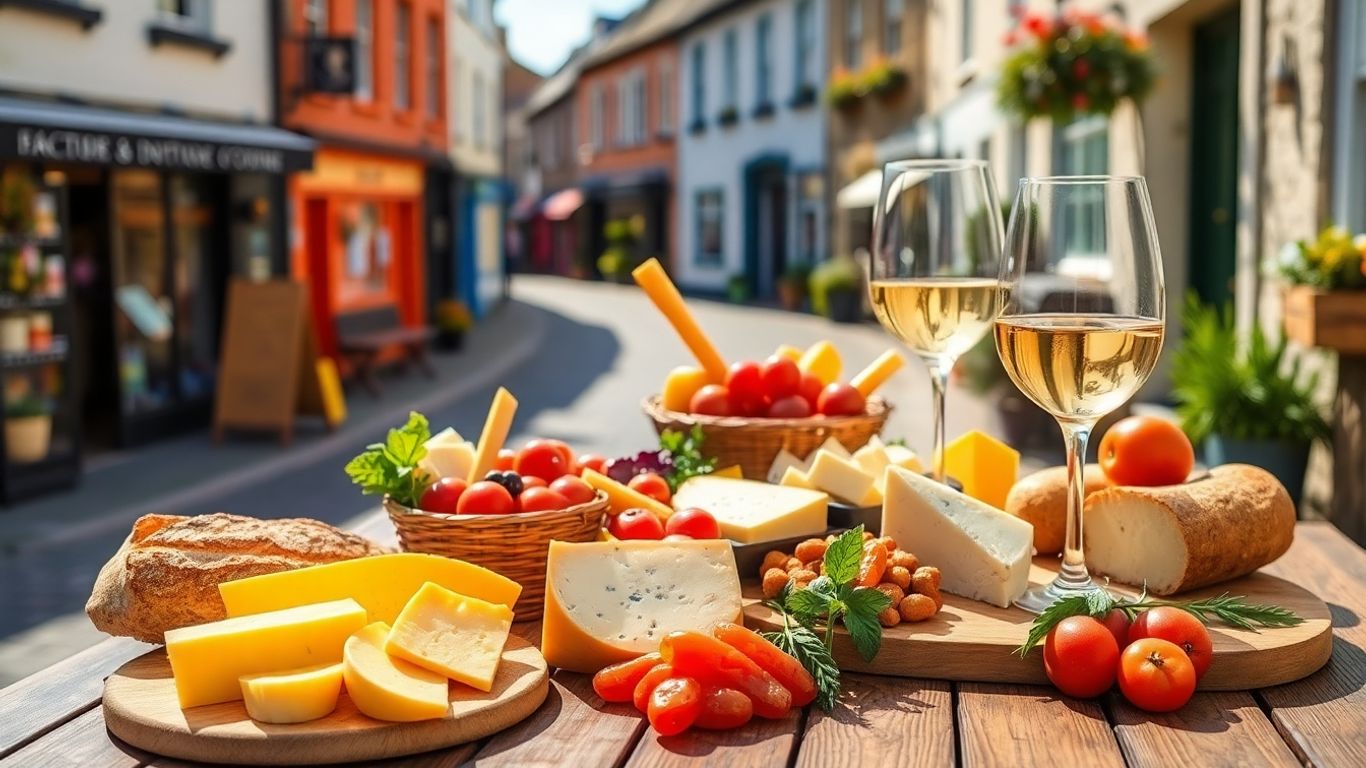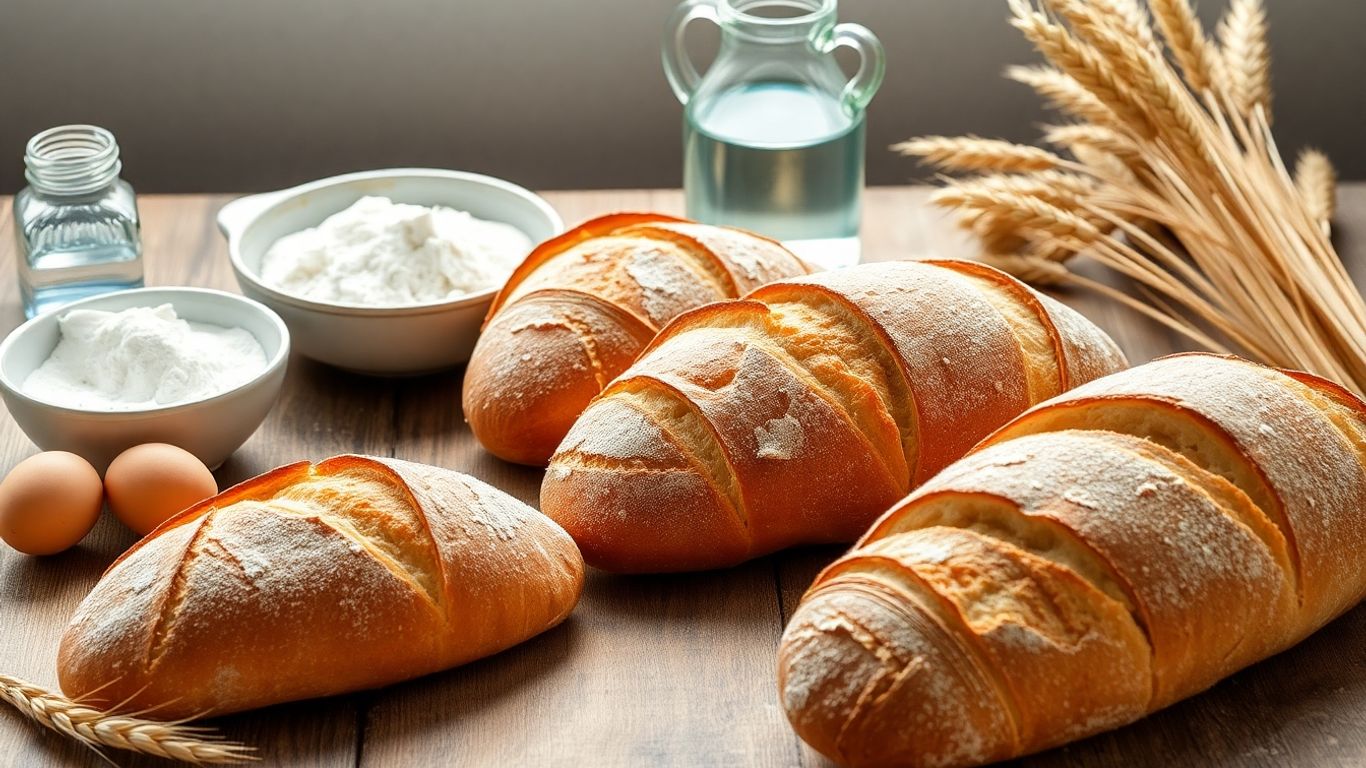Ever wondered if the sea salt from Devon really makes a difference when you’re baking? I used to just grab whatever salt was in the cupboard, but after hearing folks talk about sea salt baking Devon style, I got curious. There’s a lot of hype about local salt, especially from the coast, so I thought I’d dig into what makes Devon sea salt special and if it actually changes the taste of your bread, pasties, or even a batch of brownies.
Key Takeaways
- Devon sea salt is hand-harvested, keeping all its natural minerals and a punchy taste you won’t get from regular table salt.
- Baking with local Devon sea salt can give classic recipes, like pasties and scones, a subtle but noticeable flavour boost.
- Compared to other salts, Devon sea salt is less processed and doesn’t have added chemicals, making it a favourite for people who care about what goes into their food.
Devon Sea Salt: Unique Qualities Shaped by the Coastline

From the moment you set foot along the Southwest Coast Path, the sea air has a taste of its own. It’s no surprise, then, that Devon’s sea salt gets its charm straight from its surroundings. This isn’t your supermarket shaker salt—Devon’s version has a story and a strong link to the place it’s made.
Traditional Harvesting Methods and Their Impact on Flavour
- Salt in Devon is hand-harvested the traditional way—nature and patience do most of the work.
- Collecting seawater straight from the South Devon coast, harvesters rely on slow evaporation. It’s not rushed with machines or industrial heating.
- Everything, from collecting to drying, happens without boiling or chemical additives. Just sea water, time, and the right weather.
The result is sea salt that stays true to its natural taste, with no anti-caking agents or extras. That time-honoured method means every crystal carries a hint of the Devon coast—clean, complex, and never harsh.
Minerals and Taste: What Makes Devon Sea Salt Distinct
Look closely at what goes in and comes out with Devon’s salt:
| Devon Sea Salt | Industrial Table Salt | |
|---|---|---|
| Harvested by hand? | Yes | No |
| Added chemicals? | No | Yes |
| Mineral content | High | Low |
| Texture | Crystal/flaky | Fine, uniform |
It’s the mix of trace minerals—think magnesium, calcium, and a few others—that give Devon sea salt its punchy, almost sweet finish. Not all salt tastes the same; where the salt comes from absolutely shapes how it livens up food. Some folks say you can actually taste the sea breeze—might sound silly until you try a pinch for yourself.
If you ever wander the coast here, you’ll understand why Devon sea salt feels so different—it’s as if the coastline itself is bottled up in each little crystal.
Baking Traditions Along the Devon Coast
The coast of Devon isn’t just about sandy beaches and dramatic cliffs—it’s a real treasure trove for those who love a fresh loaf or a hearty pasty straight from the oven. There’s just something about the mix of sea air, local butter, and, of course, that sparkling sea salt, that makes baking here a bit special. Let’s have a look at how sea salt from Devon’s shores finds its way into all sorts of classic and new bakes.
Influence of Local Sea Salt on Classic Devon Pasties
Everyone’s got an opinion about the perfect pasty, but in Devon, it’s often about more than just the filling. A pinch of pure, hand-harvested sea salt brings out the best in both pastry and steak. Here’s why local salt deserves a place in the traditional pasty:
- It boosts the flavour of the dough, making every bite more moreish.
- That slight crunch around the edges? Sea salt crystals help make pastry crisp, especially in a proper Devon top-crimped pasty.
- Devon salt locks in the meaty juices, so the filling stays juicy, not dry.
Locals swear by their favourite bakeries—places like Fullers in Brixham or Dartmouth Bakery—where the recipe hasn’t changed much for decades. There’s a real pride in these little details that set a Devon pasty apart from its Cornish cousin (and yes, it’s usually got a top crimp, not side!).
Baking a pasty with Devon sea salt is like putting the coast in your pocket—no fancy tricks, just honest, gutsy flavour.
Modern Baked Treats Enhanced by Coastal Ingredients
It’s not all about pasties, though. Devon’s got a new wave of bakers mixing tradition with local ingredients, and sea salt plays a starring role here, too. Some bakes you’ll find up and down the coast include:
- Salted caramel brownies—gooey, chocolatey, and finished with a sprinkling of flakes from the shoreline.
- Sea salt sourdough—chewy, well-developed crumb, and that unmistakable salty finish.
- Chunky cheese and sea salt scones—savoured with a slather of local chutney.
Here’s a quick look at where you’re likely to taste sea salt in modern Devon bakes:
| Treat | Where to Try | Sea Salt? |
|---|---|---|
| Salted caramel brownie | Coastal cafés | Always |
| Cheese scone | Artisan bakeries | Usually |
| Rye sourdough | Farmers’ markets | Sometimes |
For both those classic pasties and the latest foodie trends, the salt that comes from Devon’s very own sea does more than just season. It connects every bake, old and new, to the coastline itself. And that’s a sprinkle of something you just can’t fake.
Choosing Sea Salt for Baking in Devon

Picking the right salt for your baking might seem fussy, but it actually makes a real difference—especially if you’re baking in Devon and want that extra edge in flavour. With so many salts on the shelf, what’s special about using locally-hand-harvested sea salt from the Devon coast?
Benefits of Using Pure, Hand-Harvested Sea Salt
- No unnecessary additives – Devon sea salt is made the slow way, without chemicals or anti-caking agents, so what you get is just salt and the minerals naturally found in the sea.
- Stronger, fresher taste – Because it’s harvested by hand and dried naturally, the crystals keep a subtle but more complex flavour, with little notes that you just don’t get from industrially produced table salt.
- Keeps traditions alive – Making sea salt by hand is a local craft, and using it in your baking helps support small producers along the South Devon coast.
Don’t underestimate that pinch of local sea salt—it can bring out and sharpen the flavours in simple scones, pastries and bread more than you’d expect. Once you start using the good stuff, there’s really no going back to supermarket salt.
Comparing Devon Sea Salt with Other Regional Varieties
There are loads of good salts out there, but here’s a simple comparison:
| Salt Type | Processing | Texture | Key Mineral Notes |
|---|---|---|---|
| Devon Sea Salt | Hand-harvested | Chunky crystals | Magnesium, calcium |
| Cornish Sea Salt | Modern machinery | Flaky | Slight sweetness |
| Pembrokeshire Flakes | Hand-harvested | Light flakes | High calcium, briny |
| Standard Table Salt | Highly refined | Fine grains | Pure sodium, neutral |
- Devon sea salt has a chunkier feel—great for topping focaccia or giving a bit of crunch to shortbread.
- Cornish salt is flakier and a bit milder—nice if you want something gentler that will just melt away.
- Table salt is okay in a pinch, but honestly, it’s just plain salty—no character to it.
Local Devon sea salt is more than just seasoning; it’s a way of baking that lets you taste a bit of the coastline in every bite.
Sea salt can make a big difference in your baking, giving your treats that special taste of Devon. If you want to learn which sea salt is best for your next recipe, check out more tips on our website. Start baking better today!
Wrapping It Up: Does Devon’s Coastline Matter for Baking with Sea Salt?
So, after all that, does baking with sea salt from Devon’s coastline actually make a difference? Honestly, I think it does. The salt you get from the sea here isn’t just salt – it’s got a bit of the place in it. The way it’s made, slowly and by hand, keeps all those little minerals and flavours that you just don’t get from the big factory stuff. I’ve tried baking with both, and the Devon sea salt gives bread and cakes a bit more character, if that makes sense. It’s not just about being fancy either – it’s about using something real, from right here, that’s been made with care. Plus, it’s kind of cool knowing your loaf has a pinch of the Devon coast in it. So next time you’re baking, maybe give it a go and see if you can taste the difference yourself.
Frequently Asked Questions
Is sea salt from Devon really different from regular table salt?
Yes, Devon sea salt is quite different from the salt you find in most shakers. Regular table salt is often made in big factories, heated at high temperatures, and has stuff added to stop it from clumping. Devon sea salt, on the other hand, is made by drying sea water slowly using old-fashioned methods. It keeps more of the minerals from the sea, which gives it a unique taste and texture.
Can I use Devon sea salt for any kind of baking?
Absolutely! Devon sea salt works great in all sorts of baking, from classic pasties and breads to modern cakes and cookies. Its natural flavour can make both sweet and savoury bakes taste even better. Just remember, because it’s more ‘crunchy’ and less fine than table salt, you might want to crush it up a bit if you need it to dissolve quickly.
Is hand-harvested sea salt from Devon better for you?
Hand-harvested sea salt from Devon doesn’t have added chemicals or anti-caking agents, so what you get is just pure salt and minerals from the sea. While all salt should be used in moderation, some people prefer sea salt because it feels more natural and has a slightly different flavour. Plus, the way it’s made is often better for the environment.

